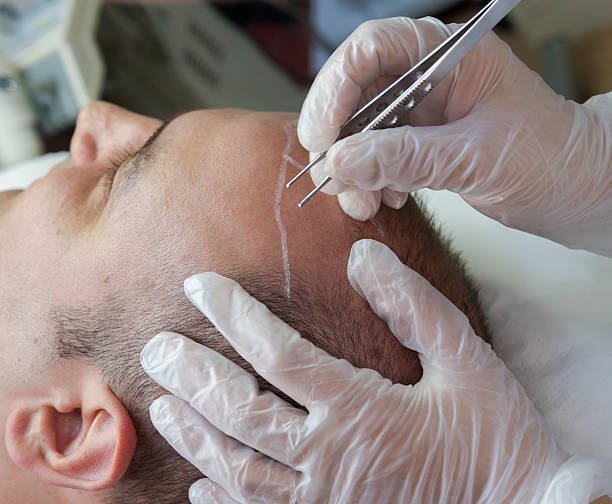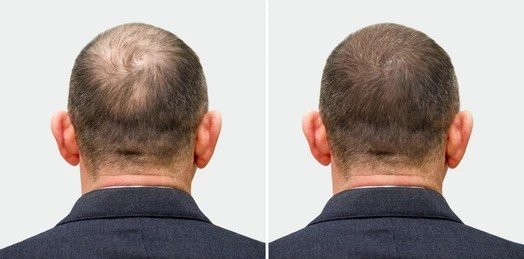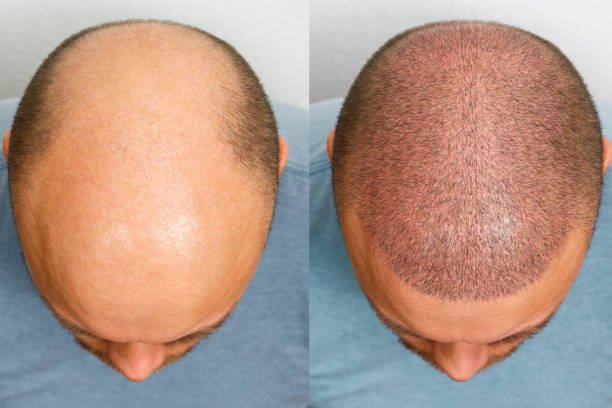PROCEDURES
-
Blood Extraction and PRP Separation:
- A small amount of blood is drawn from the patient's body, typically from a vein in the arm.
- This blood sample is then processed through centrifugation, a method that separates different components of the blood based on their density.
- The goal of this step is to isolate the regenerative cells, known as Platelet-Rich Plasma (PRP), from the rest of the blood components.
-
Creating Slits Using Needles:
- Slits or incisions are made in the targeted area using specialized needles.
- These slits serve as entry points for the subsequent steps of the procedure.
- The precise placement and depth of these slits are crucial for the success of the procedure.
-
Extraction with Punch:
- Once the slits are made, the extraction process begins using a punch tool.
- The punch tool is used to remove Hair Graft from the donor area.
- These grafts, contain bunch of hair follicles that will be transplanted to the recipient area.
-
Graft Storage in Saline Water:
- After extraction, the grafts are carefully stored in a solution of saline water.
- This solution helps maintain the viability of the grafts during the transplantation process.
- Proper storage conditions are essential to ensure the survival of the grafts until they are implanted.
-
Implantation Using Two Forceps Technique (NO-Root Touch Technique):
- The implantation phase involves transferring the harvested grafts to the recipient area.
- This is typically done using a two-forceps technique, also known as the NO-Root Touch Technique.
- With this technique, the grafts are delicately placed into the prepared slits using specialized forceps, without touching the root of the hair follicles.
- The precision and skill of the surgeon are critical in ensuring the correct placement and orientation of the grafts for optimal results.
These steps outline the key components of the procedure for hair transplantation using regenerative cells (PRP) and the NO-Root Touch Technique. Each step requires careful attention to detail and skill to achieve successful outcomes for the patient.
Contact Us
Have questions? Get in touch!
Phone
Address
H-2A, Green Park Ext Rd, Near Green Park Gurudwara, Block H, Green Park Extension, New Delhi 110016
Get in touch with us!
Results
Frequently Asked Questions
Yes, hair transplant is considered a permanent solution for hair loss. The transplanted hair follicles, once they have taken root in the recipient area, continue to grow like natural hair. However, it's essential to understand that while the transplanted hair is permanent, it doesn't prevent further hair loss in other areas that are susceptible to balding.
Transplanted hair typically goes through a shedding phase within the first few weeks after the procedure. This shedding is normal and temporary. New hair growth usually begins within a few months, with noticeable results becoming more apparent over the following months. Full results may take 6-12 months to be fully realized.
Follicular Unit Transplantation (FUT) involves the removal of a strip of skin from the donor area, while Follicular Unit Extraction (FUE) involves the extraction of individual follicular units directly from the scalp. FUT leaves a linear scar in the donor area, while FUE leaves tiny, dot-like scars that are less noticeable. Recovery time may be shorter with FUE compared to FUT.
Hair transplant surgery is typically performed under local anesthesia, so patients should not experience significant pain during the procedure. Some discomfort or mild pain may be felt during the recovery period, especially in the donor area, but this can usually be managed with pain medication prescribed by the surgeon.
Good candidates for hair transplant surgery are generally those who have experienced permanent hair loss due to genetic factors (androgenetic alopecia) or other conditions but have sufficient donor hair in the back or sides of the scalp. Ideal candidates should be in good overall health and have realistic expectations about the results of the procedure. Consulting with a qualified hair transplant surgeon is essential to determine candidacy and discuss personalized treatment options.




